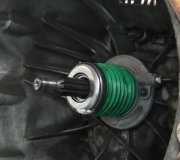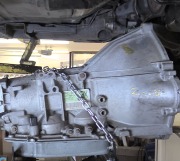Yup. Getting stuck in second gear is "limp mode" that allows you to drive slowly to a repair shop without needing a tow truck. There will be a diagnostic fault code stored in the Transmission Computer.
As a general rule, if it starts out in second gear as soon as you shift into "drive", it is likely to be sensor-related or will have something to do with the wiring. It goes into limp mode as soon as the problem is detected. If it starts out in first gear like normal, then bangs back to second gear during or right after an up-shift, it is more likely to be related to slippage in one of the clutch packs.
The same wear takes place that has always occurred since the beginning of automatic transmissions, but with older hydraulically-controlled transmissions the shifts became sloppy and sluggish, and you had a few years of warning that a rebuild would be needed pretty soon. With computer-controlled transmissions introduced by Chrysler in 1989, the computer knows how much wear has taken place and it adjusts the engage and release times of the clutch packs to overlap a little to maintain a solid, crisp shift quality. The advantage is that ability to learn the needs to maintain the desired shift characteristics and make those adjustments. The disadvantage is you don't get that year or two of warning that wear is taking place. It continues to shift like a brand new car.
It IS possible for an experienced transmission mechanic to get a good idea of the amount of wear by reading the "clutch volume index" (CVI), on a scanner. That is a set of four numbers corresponding to the volume of fluid it takes to fully apply each clutch pack. As the plates wear down, more fluid is needed to apply them. That is how the computer knows how to adjust the shift points, ... Until the day comes when it can't adjust enough to prevent slippage, then it goes to limp mode.
SPONSORED LINKS
Wednesday, April 27th, 2016 AT 6:42 PM



